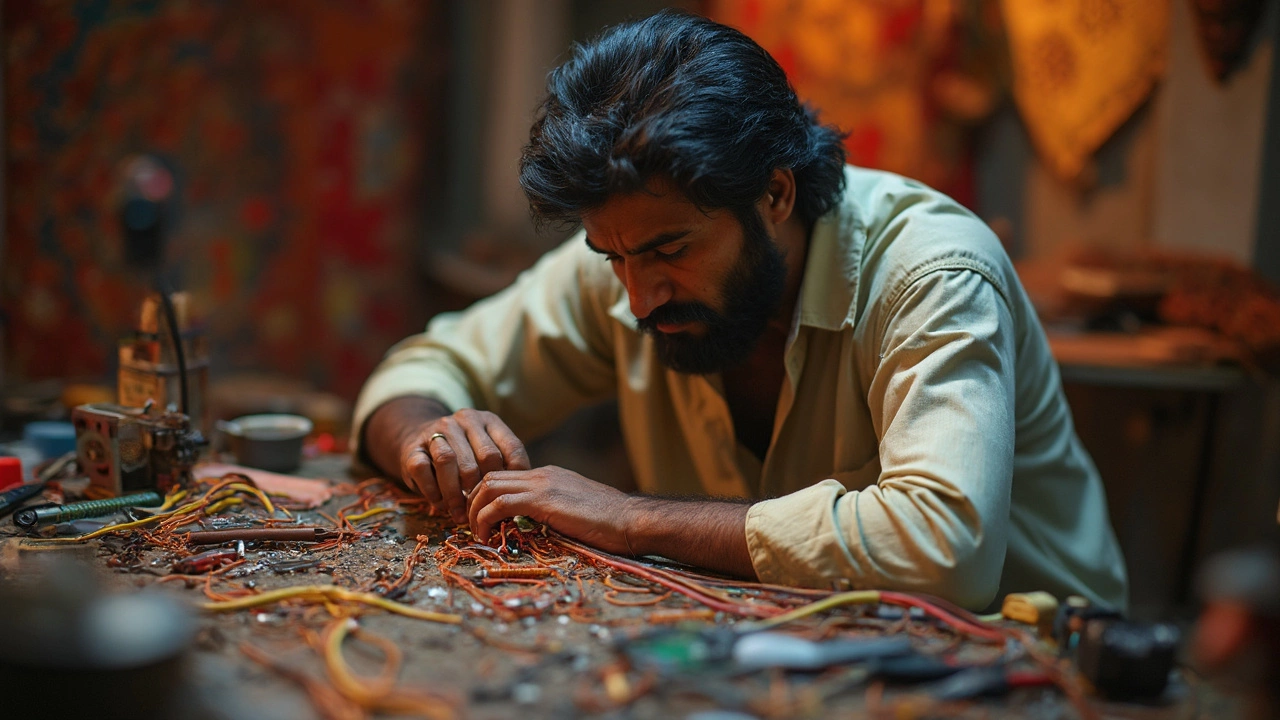Why Are Electricians So Expensive? Understanding the Costs

Ever wondered why hiring an electrician sometimes feels like you're paying for a luxury service? It’s not just about flipping a few switches or connecting wires. Electricians play a vital role, ensuring our homes and businesses run smoothly and safely. But there’s a lot behind those invoices that’s worth understanding.
First off, let's talk about the training. Becoming an electrician isn't a walk in the park. It's a rigorous process involving both hands-on experience and technical education. Many electricians complete a multi-year apprenticeship that mixes classroom learning with practical work. It's a time-consuming investment but one that ensures they're not just patching up problems—they're solving them safely and effectively.
- The Cost of Electrician Training
- Specialized Equipment and Tools
- Why Safety Requirements Matter
- Getting Value from Electrician Services
The Cost of Electrician Training
Becoming an electrician isn't as simple as watching a few YouTube tutorials and grabbing a toolkit. In fact, the journey to becoming a professional electrician is quite a commitment. It starts with a strong educational foundation — usually a high school diploma or GED. From there, many aspiring electricians enroll in a technical school or community college where they pick up the essentials of the trade.
But that’s just the beginning. The real crux of electrician training lies in apprenticeships. Typically lasting four to five years, these programs combine around 2,000 hours of practical work per year with at least 144 hours of classroom instruction. This period of training is hands-on and intense, making sure that electricians are fully prepared to tackle any electrical issues that come their way.
Why the extensive training, you ask? Electricity is no joke. It's crucial for electricians to understand the ins and outs of electrical systems, safety codes, and problem-solving. Besides, they learn how to read blueprints, understand local building codes, and adhere to precise regulations that ensure everyone's safety.
"The electrical field is constantly evolving with technology. Continuous training equips electricians to adapt and excel," says Jane Harmon, an industry veteran and trade school instructor.
Beyond the basic training, electricians often pursue further education and certifications to stay current with technological advances. This could mean diving into specialized areas like renewable energy systems or data communication systems. And guess what? All this training costs money and time—both of which are partly why hiring an electrician can be expensive.
Here's a quick look at the cost structure related to electrician training:
| Training Component | Estimated Cost |
|---|---|
| Technical School or College | $5,000 - $20,000 |
| Tools and Equipment | $1,000 - $3,000 |
| State Licensing Fees | $50 - $150 |
These figures show just a portion of what goes into becoming a qualified electrician. Next time you're handed a bill, remember that you're not just paying for a single fix; you're paying for years of dedication to mastering a crucial field.
Specialized Equipment and Tools
One thing that might surprise you about the costs surrounding electricians is just how much of it is tied up in the tools of the trade. They don't just walk into a store and grab any old set of pliers. These guys have got an arsenal of gear that's both specialized and essential for the job. We're talking insulated hand tools, sophisticated voltage testers, and even advanced diagnostic equipment.
Take multimeters, for example. These devices are critical for measuring voltage, current, and resistance. Without them, an electrician can't accurately diagnose or fix issues. A quality multimeter doesn’t come cheap, but it’s key to getting the job done right and safely.
Then there’s the gear for more complex tasks, like circuit analyzers and thermal imaging cameras. Circuit analyzers help electricians assess the health of electrical systems, pinpointing issues that aren’t obvious at first glance. Thermal imaging cameras, on the other hand, let electricians visualize temperature variations in electrical systems. These tools identify overheating spots that could lead to big problems if left unchecked.
Beyond just the gadgets, specialized equipment focuses on keeping both the electrician and the home safe. Insulated tools, for instance, are non-negotiable. They protect electricians from electric shocks, which is especially crucial when working with live wires. It's all about safety first, and these tools help ensure that.
Plus, these tools need regular updating and maintenance to stay effective. It's an ongoing expense, but it ensures that electricians can provide top-notch services. So, part of the fee you’re forking over covers the cost of having the best tools handy to fix your issues efficiently and safely.

Why Safety Requirements Matter
When it comes to electrical work, safety isn't just a suggestion—it's a must, and it's one of the key reasons why hiring electricians can be costly. Handling electricity is risky business. One wrong move and you could cause a fire, an arc flash, or even electrocution. Electricians have to adhere to strict safety standards to prevent these dangers.
In the U.S., the National Electrical Code (NEC) sets the standard for safe electrical design, installation, and inspection. Electricians must stay up-to-date with these codes, which are updated every three years to reflect new technologies and best practices. Keeping up with these codes means additional training and certification, all of which factors into the cost of hiring a pro.
"Safety isn’t expensive, it’s priceless," said John Drengenberg, Consumer Safety Director at Underwriters Laboratories. "Ensuring a project complies with safety requirements can prevent accidents and save lives."
Electricians often invest in safety gear like insulated gloves, safety glasses, and hard hats. On larger projects, they might even use portable grounds and bayonet blade fuses to prevent unexpected jolts. These tools and equipment are part of why the costs stack up.
- Insulated Tools: Protects against electric shocks.
- Voltage Testers: Essential for checking live circuits.
- Arc-Fault Circuit Interrupters: Detect and stop hazardous arc faults.
Ultimately, paying for a licensed and trained electrician means you're investing in peace of mind. Knowing the work complies with electrician training standards and safety regulations can save you money in the long run. Cheap, non-professional fixes can lead to bigger, more expensive problems down the road.
Getting Value from Electrician Services
Alright, so you're paying top dollar for an electrician. How do you make sure you're getting your money's worth? It's all about understanding what you're actually paying for and squeezing every bit of value from the service.
First, always hire a licensed and certified electrician. Sounds like a no-brainer, right? But you'd be surprised how many people skip this step. These folks have gone through the necessary electrician training and are up-to-date with safety codes and standards. This reduces risks and ensures high-quality work.
Want to help your electrician work more efficiently? Make a list of all the electrical issues and upgrades you'd like addressed. This saves time and might even save you some cash. It’s like going to the doctor with a clear idea of your symptoms—everyone appreciates it.
Another tip is to plan ahead. If you notice flickering lights or strange outlets, don't wait until it becomes a big problem. Regular maintenance or minor fixes can be way cheaper than major repairs down the line. Plus, electricians can advise on energy-saving options that might cut your utility bills, paying for themselves over time.
Here's a quick comparison to consider before you settle on a professional:
| Electrician Type | Average Hourly Rate |
|---|---|
| Apprentice | $40-$50 |
| Journeyman | $50-$70 |
| Master Electrician | $70-$100 |
This table gives a rough idea of what to expect depending on the skill level, and it's always a good strategy to match the task complexity with the electrician's experience.
Finally, don't forget to ask your electrician for tips that might prevent future issues. They can provide insights into how to maintain your electrical systems, which translates to long-term savings and fewer headaches. So while the upfront cost might make you wince a bit, remember it's an investment in safety, convenience, and peace of mind.

Post-Comment